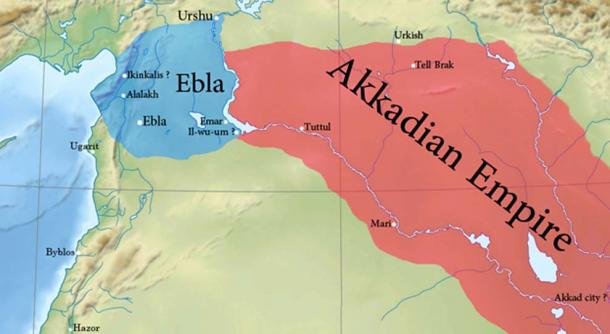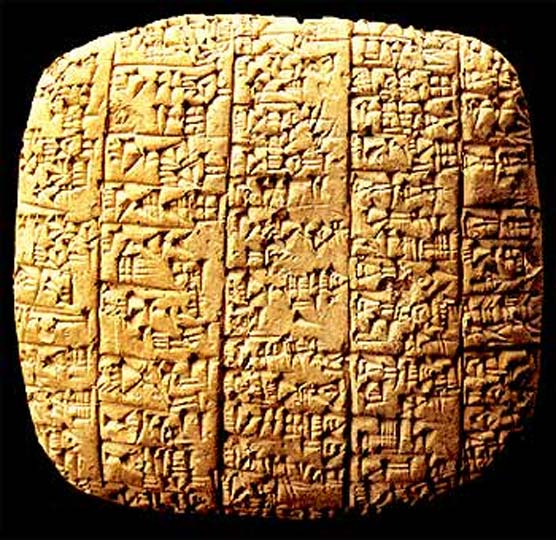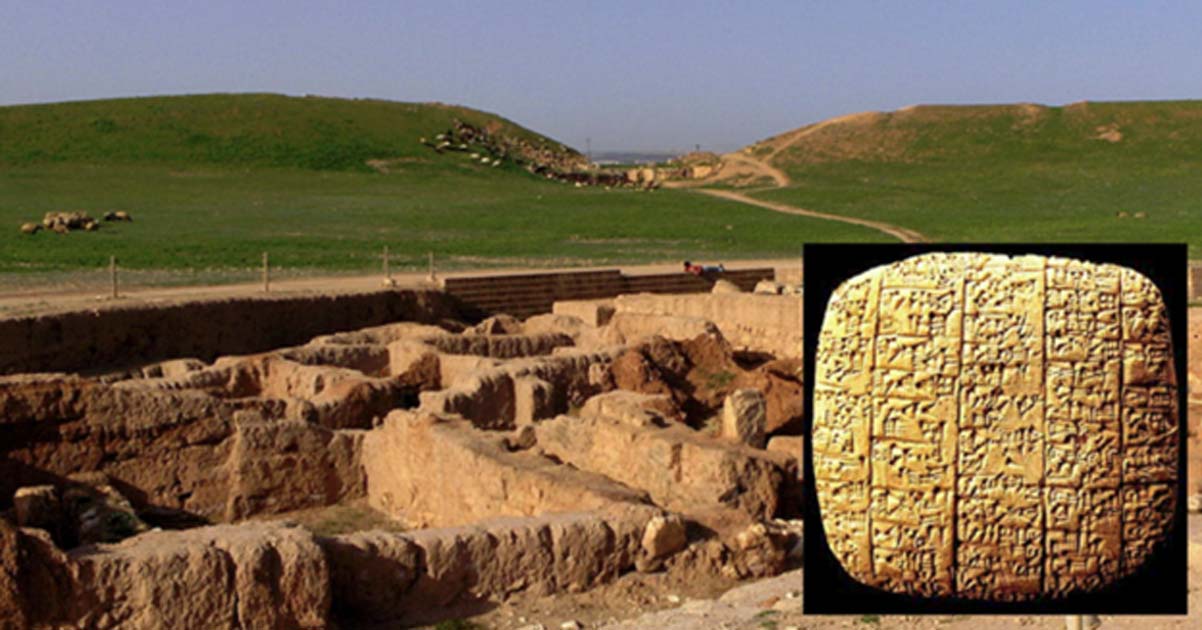Justice, Myths, and Biblical Evidence: The Wealth of Information Held in the Ebla Clay Tablets
The Ebla clay tablets have provided researchers with a wealth of information regarding cultural practices and myths, judicial affairs, ancient languages, business, and foreign and domestic policies from the ancient city of Ebla between 2500 BC and the destruction of the site in 2250 BC. Moreover, these clay tablets provide some key evidence for controversial biblical accounts.
A new source of suggestive evidence for the studies of Biblical stories and the Abrahamic Traditions was found within the contents of the Ebla clay tablets. Discovered in 1975, by the University of Rome professor Paolo Matthiae and his team of archaeologists, the tablets were unearthed in the site where the ancient city of Ebla once stood. This is the current location of a village named Tell Mardikh, in northern Syria.
The findings in ancient Ebla included about 1500 intact cuneiform clay tablet and thousands of other pieces and fragments of different sizes and shapes. The tablets were found in a room containing the royal archives of Ebla, which have remained undisturbed since the destruction of the city, 4,500 years ago. According to David Noel Freedman,
"A preliminary reading of batches of tablets established beyond question that this was the archive of the royal palace of ancient Ebla. It consisted mainly of the economic accounts (covering trade and tribute) of the rulers of the city-state during a period of perhaps a hundred to a hundred and fifty years in the middle of the third millennium BC."

Location of Ebla. (CC BY-SA 4.0)
Topics on the Tablets
Altogether, the Ebla clay tablets are of great cultural relevance because they give us information reflecting trading interests, commercial activities, diplomatic and foreign relations, the economy of the city, domestic affairs, and cultural matters. Contrary to other prominent inscriptions of the era, the tablets contained almost no texts on military matters. Among the valued information recorded, one tablet stated, for example, that the city had a prosperous population of about 260,000 citizens.
- Damascus: The Ancient City that was Fought Over by Numerous Civilizations is Facing its Biggest Crisis Today
- Ancient tablet dedicated to Emperor Hadrian may explain mystery of Jewish revolt
- Ancient Signs in the Sky: Did a Meteorite Change the Course of Christianity 2,000 Years Ago?

Royal palace "G" in Ebla. (CC BY-SA 4.0)
On this subject, it is relevant to note that some of the tablets dealt with judicial proceedings. There are elaborations as to the penalties incurred when a person is injured, and there are details about various trials. The tablets depict a civilization about 1,000 years earlier than that of Moses, which provided important written information about the administration of justice. It was clearly a highly-developed civilization, with concepts of justice and individual rights to the fore.
Although the majority of the tablets deal with economic matters and other commercial dealings, others described topics such as offerings to the gods, rituals, and legends. As Clifford Wilson writes,
“There are literary texts with mythological backgrounds, incantations, collections of proverbs, and hymns to various deities. Rituals associated with the gods are referred to, many of these gods being known in Babylonian literature of a later period. These include Enki, Enlil, Utu, lnana, Tiamut, Marduk and Nadu”.
Languages Used on the Tablets
The Ebla tablets were written in two languages, Sumerian and a previously unknown Semitic dialect which scholars have named Eblaite. The discovery of the ancient language initiated an academic debate regarding the origins of this new dialect, and whether it came from the east Semitic branch, Akkadian, or from a west Semitic branch linking it to the Canaanite language. The writing is considered a hybrid, adopting partial Sumerian words and partial characters that express syllables in the local vernacular. David Noel Freedman has explained that,
"There are 114 vocabulary lists in both languages which will provide a very ample glossary for the study of the other texts and of the Bible. Individual items will ultimately affect the interpretation of almost every page of the Hebrew Bible as research continues."

Approximate borders of Ebla and the Akkadian Empire in the second kingdom. (CC BY-SA 4.0)
Suggestive Evidence to the Bible
The names of places and people found in the tablets raised a substantial interest among scholars. There is an extensive area of overlapping information between the Ebla tablets and Biblical text. Among the many personal names found in both the Bible and the tablets are the following: Abram, David, Esau, Ishmael, Israel, Micaiah, Michael, and Saul. The tablets also contained the name Yah, the short version for Yahweh, the personal name of the God of Israel.
The name of places is also of great significance, especially since Ebla, located west of the Euphrates, was oriented mainly toward the south and west, and therefore the city's trade and other concerns overlapped heavily with those of biblical territory.
Another remarkable discovery came with the mentioning of Sinai in the tablets. This was surprising for a number of reasons, including the suggestion that it could be a city on the coast, and simply the mentioning of it at all. This may impact what was previously thought about the location of Mount Sinai in connection with the Exodus stories. There are different theories regarding the location of Mount Sinai. According to Dr. Freedman’s studies, it seems that the occurrence of the name Sinai found in the tablet, which predates the time of Moses, would indicate its attachment to the area before the time of the prophet.

One of the Ebla Tablets. (A Lampstand)
Professor Giovanni Pettinato, an epigrapher also from the University of Rome, believes that he has found something very significant on one of the Ebla tablets containing information of geographical names - including the ones of the five cities of the plain (Sodom, Gomorrah, Admah, Zeboim and Bela). The five cities of the plain are mentioned together as a five-city league in only one chapter in the Bible, Genesis 14. This could suggest a type of connection between the list in Genesis 14 and the list on the Ebla tablet.
- Nearly Lost from The Pages of History, Mari Is The Oldest Known Planned City in the World
- The Babylonian map of the world sheds light on ancient perspectives
- Do the Tartaria Tablets contain evidence of earliest known writing system?
This detail is important because it means that the person who wrote down the story in Genesis 14 had access to the same information which is found in this tablet from Ebla. Most scholars have agreed with the theory that Genesis 14 was written much later - but this could bring a new insight to information supporting, for the first time, contact between Genesis 14 and outside authentic information. The historicity of the Ebla tablet would present no problem since it contained simple commercial text, and not just legends or mythological tales.

A tablet from the archive. (Public Domain)
The destruction of cities is probably one of the most unfortunate, and common, events in the ancient Near East region. Most of them were rebuilt before they were destroyed once again. Ebla was one of the sites that suffered this destiny, but luckily many of the tablets have survived to tell us past tales, and provide new evidence to the study of Biblical stories – an area which is often controversial.
Top image:the southern district ruins, with the background of the Damascus gate and defensive wall, at Ebla. (Public Domain), A clay tablet found in Ebla, Syria. (Public Domain)
By Marina Sohma
References:
Wellisch, Hans H., ‘Ebla: The World’s Oldest Library’ (1981)http://www.jstor.org/stable/25541212
Freedman, David Noel, “The Ebla Tablets and the Abraham Tradition,” (1978).https://rsc.byu.edu/archived/reflections-mormonism-judaeo-christian-parallels/5-ebla-tablets-and-abraham-tradition
Wilson, Clifford, ‘Ebla: Its Impact on Bible Records’
http://icr.orh/article/ebla-its-impact-bible-records/
Benner, Jeff A., ’The Archives of Ebla and the Bible’
http://www.ancient-hebrew.org/bible_ebla.html
Wallace, J. Warner, ‘Ebla Tablet’ (1013)
https://www.str.org/articles/the-old-testament-has-been-archeologically-verified#.WF_6sXeZNmA



















